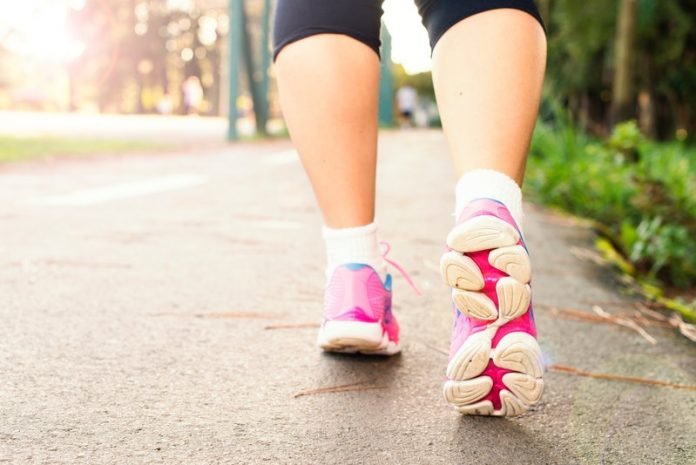
In a recent study from Shinshu University in Japan, researchers found an effective way to increase overall fitness and decrease lifestyle-related disease (LSD) in older people is Interval Walking Training (IWT).
The fining showed it’s not how much you walk, but how intensely you do so for a minimum amount of time to get positive results. It may be welcome news for those who want to save time and get the most out of their workout.
The study is published in Mayo Clinic Proceedings. The lead author is Dr. Shizue Masuki.
Interval Walking Training is the method of walking at 70% of the walker’s maximum capacity for 3 minutes, then at 40% of their capacity for the next 3 minutes. This is continued for 5 or more sets.
In the study, the team studied a group of 679 participants with an age of 65 over the course of 5 months.
Every two weeks data was collected from participants at a local community office and via the internet through the data measuring device (triaxial accelerometer).
The triaxial accelerometer is a device that beeps to let the walker know when they are working at least 70% of their peak aerobic capacity (VO2peak), and at 3 minutes to switch.
VO2peak is the amount (volume) of oxygen (O2) the body is able to use during physical activity. It is the milliliters of oxygen used by kilograms of body weight per minute.
When the VO2 number reaches a figure and plateaus during intense exercise, that is the maximum amount of oxygen the person is able to utilize and is an indicator of fitness.
The higher the number, the more they are able to use, and the more intensely they can exert their body. Endurance athletes such as cyclists can have a VO2peak in the 70s.
The team found participants in the study had big improvements in their aerobic capacity (VO2peak), with 50 minutes of IWT a week. Improvements to their VO2peak were plateaued above 50 minutes a week.
They achieved a 14% increase in VO2peak and a 17% decrease in lifestyle-related disease through IWT.
This method is highly desirable due to the ease of maintenance. Many participants remained highly motivated and went beyond their prescribed regimen and do not require expensive equipment.
If you care about exercise, please read studies about exercises in the morning and evening offer different health benefits and findings of just 1 hour of this exercise every week may prevent heart attack, stroke.
For more information about exercise and your health, please see recent studies about these two exercises may help protect muscles in older people and results showing that this slow exercise may help you lower blood pressure.
Copyright © 2021 Knowridge Science Report. All rights reserved.



